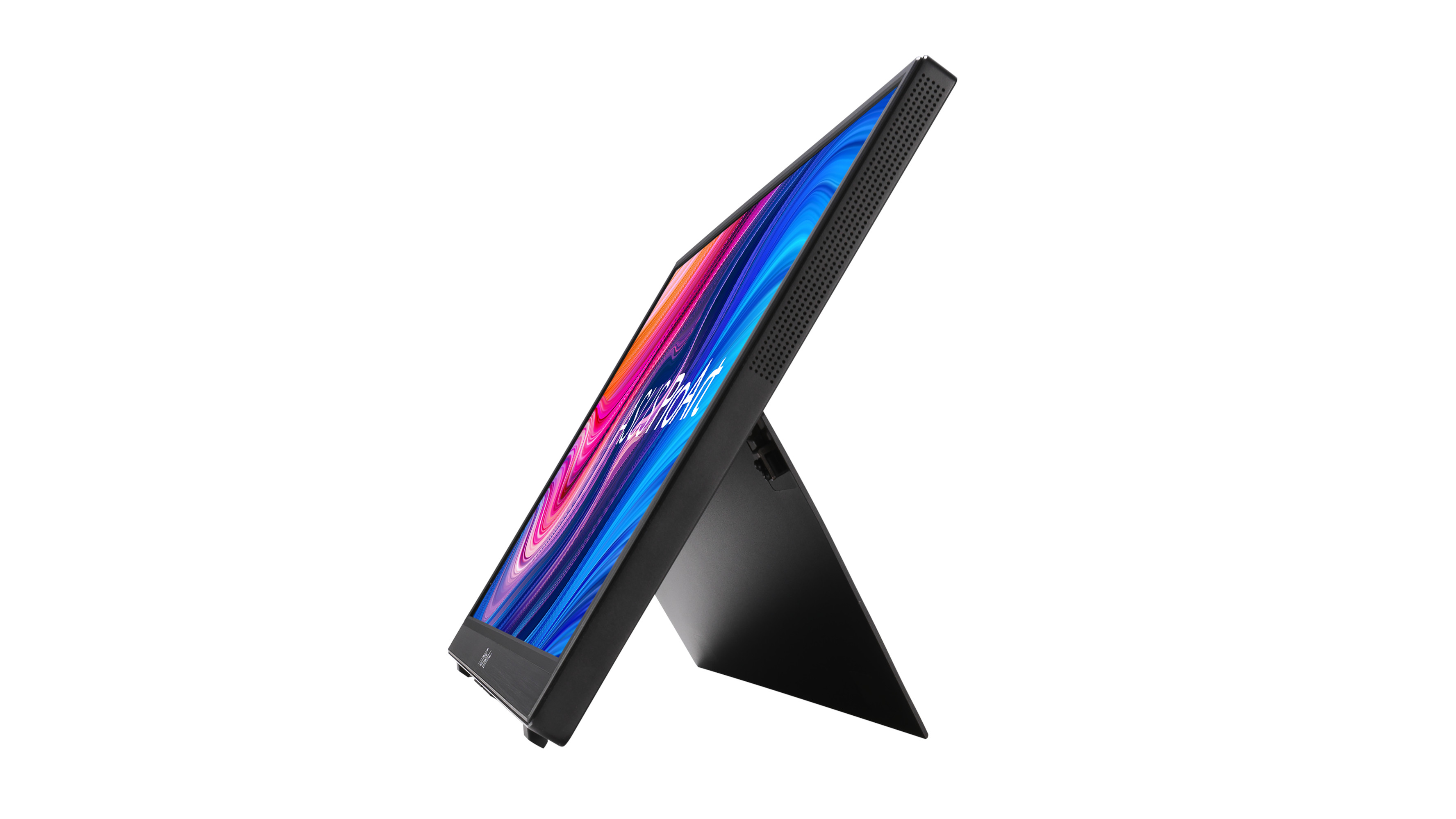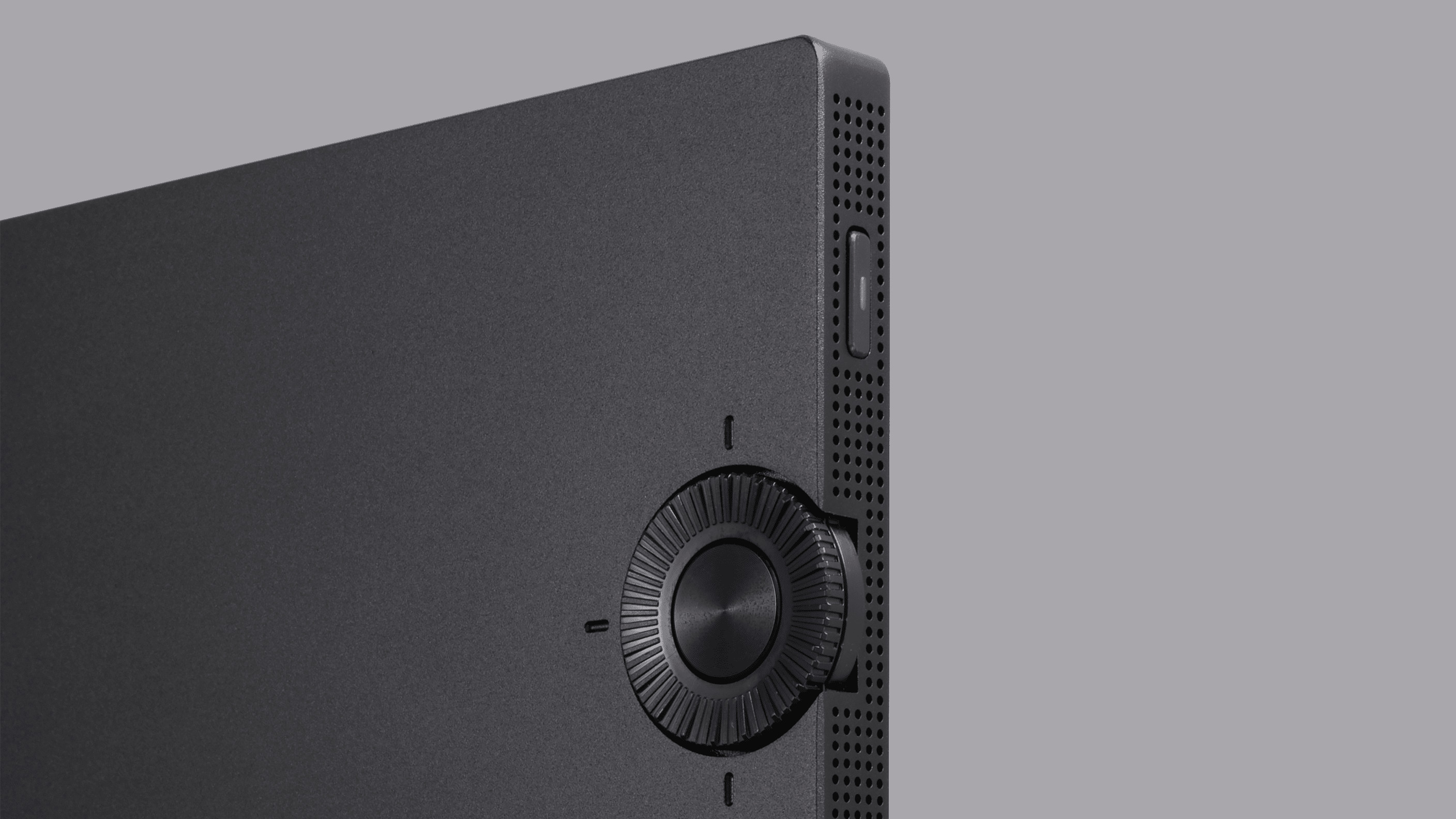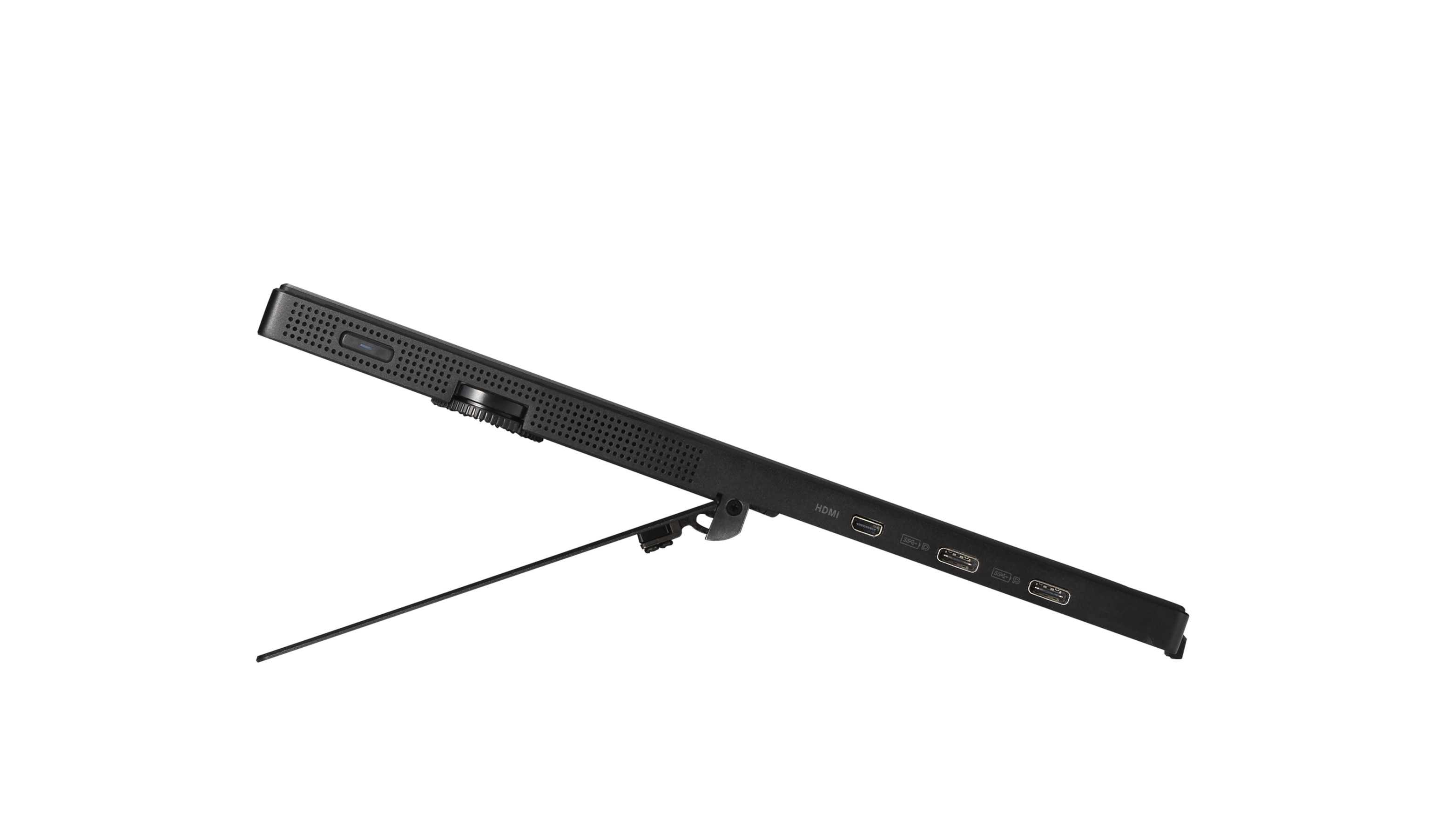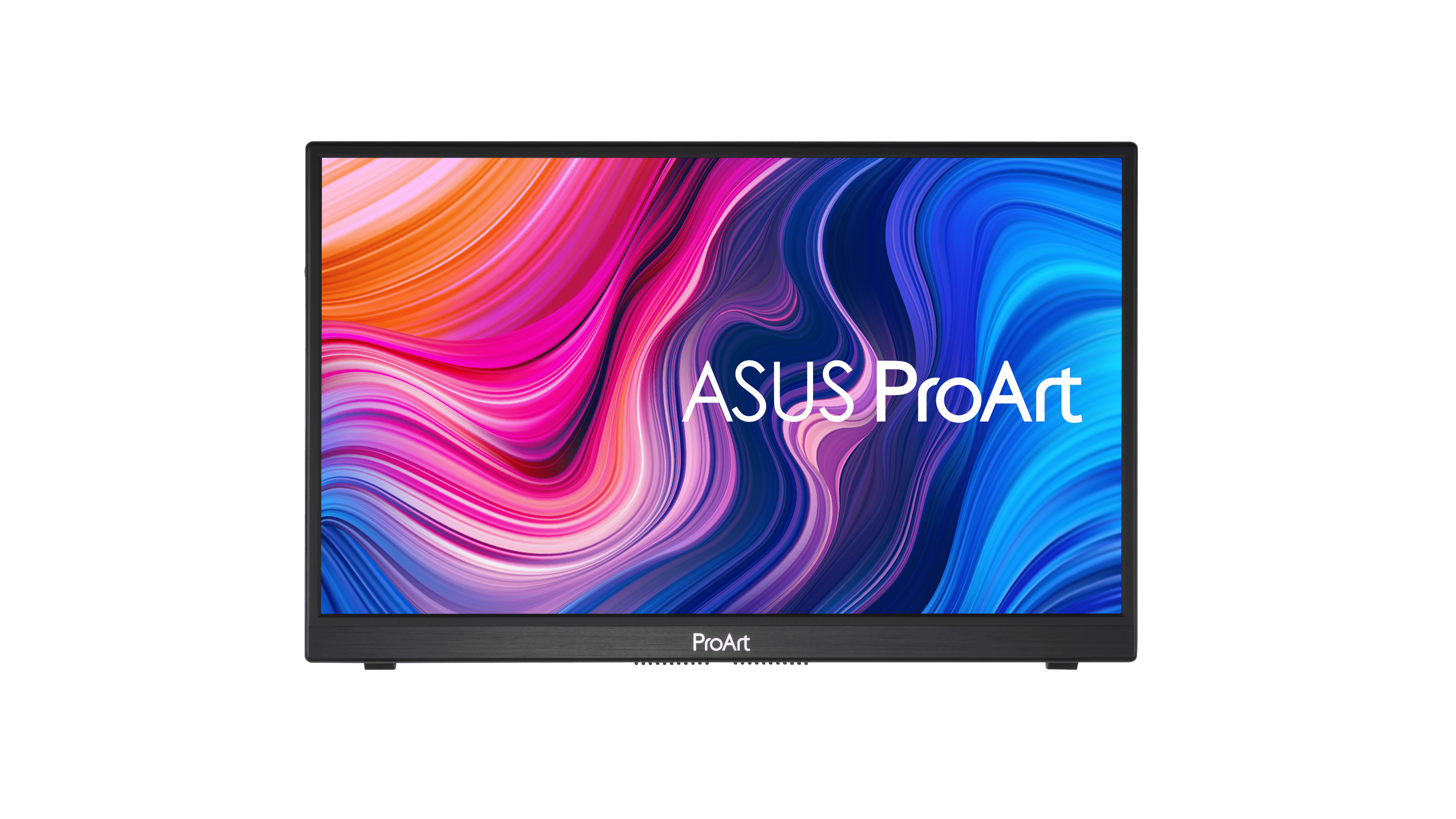Digital Camera World Verdict
The portable ProArt Display 14 from Asus is an excellent in-the-studio monitor companion for your camera that’s a step up from the usual options. sRGB and Rec. 709 color calibration means you can check images or footage as you take it to allow you to tweak anything you need to without interrupting a shoot.
Pros
- +
100% SRGB
- +
300 nit brightness
- +
Delta E < 2
Cons
- -
Dim sRGB setting
- -
No battery
- -
Designed for PC
Why you can trust Digital Camera World
Every professional photographer has their own particular workflow, but there’s always something you could add to your kit to improve it a little... or in this case, maybe a lot. Asus’s ProArt Display 14 is a color accurate portable FullHD monitor that’ll connect directly to your camera so you can check images on the fly to ensure you’re not missing the shots you need.
Specifications
Display area: 14 inches
Aspect: 16:9
Panel type: IPS
Panel bit depth: 8-bit
Display colors: 16.7M
Resolution: FullHD (1920x1080)
Pixel density: 157.35 PPI
Refresh rate: 60Hz
Response time: 5ms
Brightness: 300 cd/m2
Contrast ratio: 700:1 (static)
Color space coverage: 100% sRGB, 100% Rec. 709
Video inputs: micro HDMI x 1, USB-C x 2
Key features
While you’d generally have to connect a laptop in order to get a good idea of what your shots will look like, this process means you’d have to wait for all your images to finish transferring or deal with the lag as your computer tries to read thousands of large image files from flash memory. Either way it’s not a great way to keep everyone on set or at the shoot focused and in the moment.
The PA148CTV can be mounted directly to a tripod via the thread at the bottom centre of the screen, or placed on a table with the rear kickstand so you can position it at a convenient height, exactly where you need it. This can then be connected to a camera via the included mico HDMI cable or the two USB Type-C sockets. While the former here will carry visuals and controls from your camera across to the display, the USB-C connection is also capable of powering the device, as long as whatever you connect it to can output 10W of power. Seeing as most of the time you’re going to be connecting it to your camera, there’s an additional USB-C port so you can run power concurrently.
Unfortunately there’s no battery in this one so you’ll have to ensure you’re able to hook it up to permanent power. It’s a little disappointing to not have the additional flexibility provided by a battery, but there are legitimate trade-offs to weigh up here. Considering both the additional expense of a battery and that its intended to be used by professionals on-set, it’s generally going to be in demand for much longer periods than any battery would last – especially with the brightness cranked up, so we understand the omission.

This display has been calibrated to be suitable for any professional sRGB color work, so you can trust that when you eye it in the studio you won’t get any nasty surprises when you get back to the editing room. Unfortunately for anyone working in higher resolutions or HDR color spaces, you’ll only get an approximation using the DCI-P3 setting since it’s only capable of handling 8-bit color.
Asus has included a dial on the back of the unit that's primarily designed to access the menu system, but which has been tweaked to interact with menus in Adobe’s Creative Suite. When combined with touchscreen functionality, this control wheel makes basic editing on the go fast and intuitive enough to work into your workflow if the need arises.
Last but not least is touchscreen compatibility which allows you to interact with photos directly on the screen. While the screen uses Projected Capacitive (PCAP) touch functionality to mean it has the broadest possible compatibility, it will only be usable by certain camera and PC operating systems, so check your camera specs if touchscreen functionality is a must-have feature.
Build & handling
At 2.5kg it’s not actually all that light for a portable display, but it’s basically the same as an ultraportable laptop so you wouldn’t hesitate to bring it with you. At 1.2cm thick the same can be said about the overall shape of the device, which is pretty hard to distinguish from a laptop before firing it up. Asus includes a leather-like sleeve to protect the screen and add that extra element of protection for portability. The kickstand has a good range of viewing angles, from almost vertical to basically flat on the table, so you shouldn’t have any issues with viewing angle.
Asus has had the screen color calibration verified by Calman with a color accuracy of Delta E less than 2. It’s not the first color calibrated display to hit the shelves, but the average Delta E of under 1 is pretty good against DCW’s best portable monitors roundup.
In addition to a professional level color space there’s the more expected tech like a matte screen that will reduce any glare and reflections on the screen. The IPS level LED display also means you won’t have to be perfectly centered to get a precise view of the colors.
Based on the touchscreen compatibility and the additional software perks, this screen is predominantly designed for PC users since a lot of the best features will be missing on Mac.

Performance
The menu wheel is simple enough to use and allows you to set custom shortcuts so you can quickly shift between viewing modes. What’s much better though is its new additional purpose as a quick dial for Adobe software, allowing you to quickly select between a large range of settings quickly. This dial works perfectly for a purely touchscreen interface by adding immediacy to tools that would usually be hidden in menus that can take time to unpack. The dial will also work with any of the Microsoft Surface Dial functionalities which will be great for creatives who are already familiar with the Surface product line.
While the general and DCI-P3 color modes are vibrant enough to be clearly visible in a bright room, the sRGB preset runs significantly darker. It’s only just bright enough to get a good look at colors indoors during the day with a bit of ambient light, so you’ll definitely want to invest in a hood for the display to cut out any studio or background lighting.
14-inches is a big enough screen to really get a good idea of what a photo is going to look like in larger formats, and while it would always be nice to have higher resolution displays, the Full HD spec is fit for purpose. It offers 157 ppi viewing density that looks detailed and, if you’re confident leaving your color editing for later, then the 300nit brightness is ample for a low-power portable display like this one.
Verdict

The ProArt Display 14 from Asus has a solid feature set for professionals looking for something that can be used to occasionally check color on the fly while still providing all the conveniences of a versatile portable display. It’s not the most affordable portable screen we’ve come across, but the brightness and color accuracy make it a competitive offering for those that need something more than a budget option.
The Asus Dial is sure to be a major drawcard for power users hoping to speed up their workflow and, as long as the touch screen compatibility works with your camera, the only downside is that it doesn’t have a battery.
Read more:
The best portable displays
The best photo editing tools and accessories
The best NAS drives
The best cameras you can buy right now
The best monitor calibrators
The best photo editing software
The best desktop computers for photo editing
The best ultrawide monitors for photo editing
Best video editing monitors


